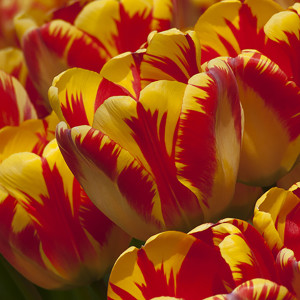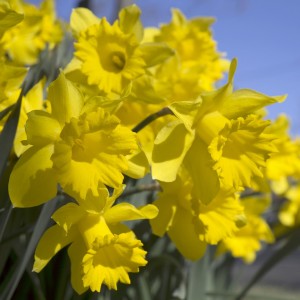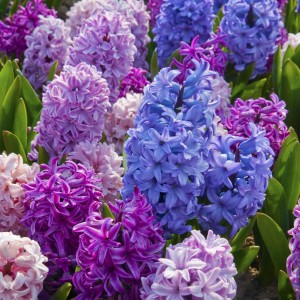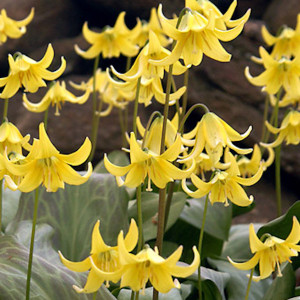TIME TO PLANT SPRING-FLOWERING BULBS!
PLANTING SPRING-FLOWERING BULBS
We have a great selection of bulbs in stock now! We have hyacinths, glacier lilies, grape hyacinths, daffodils and several colors of perennial tulips. These are highest quality, large, Dutch-grown bulbs. Each bulb is .75 cents each Come in and see the selection today!
The best time to plant spring-flowering bulbs is when soil temperatures drop below 60 degrees. In Montana this may occur as early as in August, but because of our frequent fluctuations in temperatures, October or early November is the best time. Many spring bulbs establish root systems in the fall while the soil is not yet frozen. If necessary, bulbs can be planted right up until the ground freezes, but will bloom better if you get them in earlier.
Bulbs prefer a well-drained location in the garden. Tulips, hyacinths, and grape hyacinths need full sun. Daffodils, snowdrops and glacier lilies (trout lilies) like part shade, though daffodils will grow in full sun in Montana. Daffodils are deer and rodent proof, but most others, especially tulips, need to be in a place protected from deer and voles. Dig your soil about 10 or 12 inches deep. Sandy loam is the best soil for bulbs, but you can improve your soil. Add gypsum to break down clay; peat moss or compost will also help. Bone meal is excellent food for bulbs. It adds phosphorous, which promotes larger and more numerous blooms. Mix bone meal well with the soil in the bottom of the bed for best results. Soil pH should be about neutral for these bulbs, but hyacinths and tulips will tolerate more alkaline soils. Plant tulips and daffodils at 5 bulbs per square foot, hyacinths and glacier lilies at 3 to 4 per square foot, and grape hyacinths at 8 to 10 per square foot. After planting, backfill the soil but do not pack it down over the bulbs. Water the bed well. A winter mulch of evergreen branches will help protect your bulbs over winter. Straw is not a good mulch for bulbous plants because as it rots down it attracts disease carrying organisms like botrytis and other molds.
The general recommended planting depth for bulbs is three times the height of the bulb deep; pointed end up. Tulips, hyacinths and daffodils should be planted about 6 to 8 inches deep, grape hyacinths and glacier lilies about 4 inches deep.
Leave foliage on your bulbs and let it die down naturally. This feeds the bulbs and helps them to flower well next year. Most bulbs, especially tulips, like dry soil conditions after foliage dies down. In some climates, or if summer bedding is planned for that location, people dig and store their tulip bulbs and replant them in fall. Here in Montana, you can leave the bulbs in the ground if you give no additional summer water. Do not water them until October. To give the roots a boost before winter, spread bone meal over your bulb beds before you water. Glacier lilies and a few other bulbs like to grow in moist soil, but can tolerate dry soil conditions for a short period during late summer.




